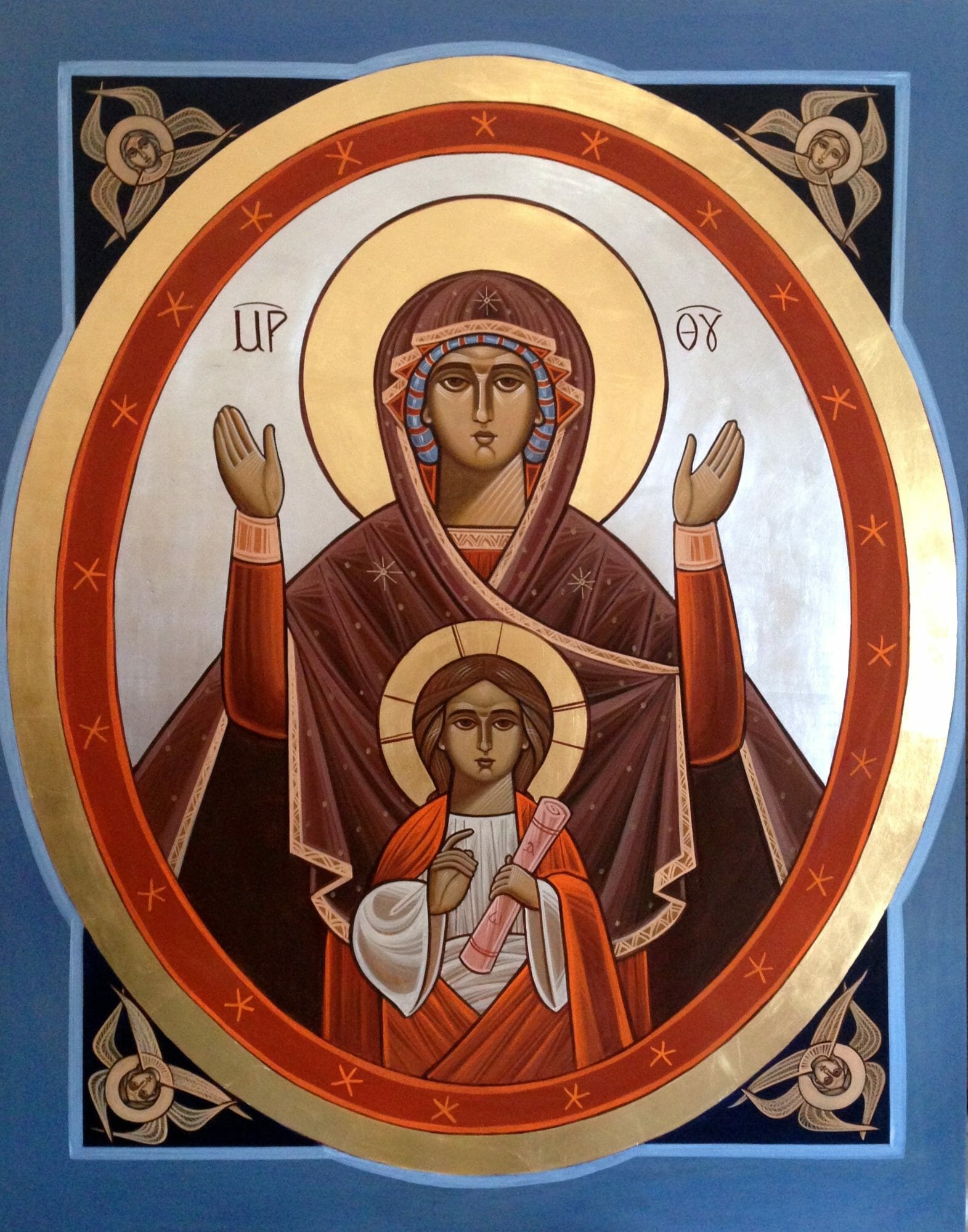In the silence of Egypt’s deep heart, among the warm stones of monasteries carved into the desert, there are faces that burn without moving. Icons. Not as liturgical ornaments, nor as pious souvenirs; they are living thresholds. Within them, a presence keeps watch. What is seen is no allegory, no portrait. It is the visible trace of what never left.
In the Coptic tradition, an icon is not simply a sacred image. It is a body that survived time. A body that watches, eyeless in flesh but full of eyes in spirit. And, among all icons, one commands silence, inclination, and a particular inner trembling: the woman who bears the Word. The one the West calls Mary, but who here, in the desert, becomes the Tent of Meeting. The votive Sinai. The nameless Face that guards the Name.
She does not remain within scripture alone. She becomes a form of unceasing liturgy. Her face is not memory but presence. Her womb is no metaphor but altar. And the icon that displays Her, still and wide-eyed, becomes a burning mirror. Whoever looks is looked upon. Whoever seeks is pierced. Whoever touches is touched. The image does not point toward Her; She is the image. And what it reveals is no past, but a desert that still burns.
I. The Gaze That Does Not Blink
Coptic iconography is not religious art. It is a spiritual grammar. In its austere lines, its frontal faces, its eyes that never look away, a form of presence is encoded. These figures have no depth, no shadow; they are drawn outside of time.
And when the one depicted is the bearer of the Word, the icon ceases to be a surface; it opens into an abyss. Her gaze does not contemplate; it penetrates. Her eyes are larger than Her face, impossible to escape, fixed on the one who dares to meet them.
This is no human gaze, no sentimental maternal glance. It is eschatological. It carries the weight of someone who has seen the Infinite born into flesh, and watched it die. The eyes of someone who gestated God and kept silent. These eyes behold the faithful even in their sleep, in their flight, in their failure. Yet they do not close. The icon watches like a night sentinel guarding fire; not to control it, but to ensure it does not go out.
II. The Body as Wandering Tabernacle
In Coptic theology, the body of the bearer of the Word is more than a vessel. It is temple, path, and dwelling. She becomes the continuation of Exodus; just as Moses walked with the Ark, the Copts walk with this figure who carries the Word within flesh, not stone.
She is the new Tent of Meeting, where divine presence dwells not in architecture but in a womb. Her body becomes the only altar not made by human hands.
And this altar was not dissolved by death. The Coptic tradition regards the body as an incorruptible seed of mystery. This is why the monks carved churches into stone; they were imitating Her womb. They sought to replicate Her silence, to offer the Word shelter when the world seemed to collapse.
She does not point toward the sky. She walks among dust and ruins. Her feet are always veiled, because the ground She touches is made holy.
III. The Liturgy of the Icon: The Body as Mass
In Coptic devotion, the icon is never an object. It is a silent sacrament. Each icon is painted in fasting, anointed in oil, installed as one would install an altar. It does not exist to be viewed; it exists to make others see.
The faithful do not gaze at it as they might observe a painting. They approach it as they approach the sacred. The kiss offered to the icon is not an act of reverence alone. It is a vow. The image responds. It listens. And, at times, it speaks.
This woman, shown in the icon, always holds the Child. Yet the Child is not frail. He is a living Word. She does not cling to him. She offers him. Her hand is always gesturing to the heart, to the altar, to the flame.
And that gesture is liturgical. Every icon becomes a suspended mass. The gold around the head is not decoration; it is radiance. The blue robe is a veil. Her unmoving face does not signify passivity; it is the absolute silence of assent. And Her closed mouth says more than a thousand sermons.
IV. The Shield of a Hidden People
The Coptic Church has survived two thousand years of persecution, not only through monastic rigor or ascetic fervor. It has endured because it was guarded by an image. The image of the woman who keeps watch. One who needs no crown, no throne, no name spoken aloud.
She has remained in homes, caves, sanctuaries. She stood while churches burned. She shone while priests were slaughtered. Her image is more than faith. It is fidelity. The Copts do not speak of Her with sentimentality. They speak with reverence. Where the world sees a painting, they see a covenant. Where others see a mother, they find a refuge.
She never fled, never ceased, never retaliated, She simply remained. Eyes open. As one who keeps vigil over the night of an entire people. And every time the faithful behold Her, it is as though the desert parts and, in the center of nothing, a presence whispers this: I am here.
